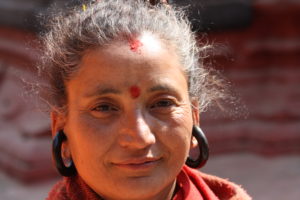 Hinduism cannot be understood without the Goddess (Devi/Śakti) and the goddess-oriented Śākta traditions. The Goddess pervades Hinduism at all levels, from aniconic village deities to high-caste pan-Hindu goddesses to esoteric, tantric goddesses. Furthermore, tantric goddesses have played a significant role in the formation of tantric Buddhism, or what is sometimes referred to as ‘Śākta Buddhism’. Nevertheless, these highly influential forms of South Asian religion have only recently begun to draw scholarly attention. Taken together, they form ‘Śāktism’, which is considered one of the major branches of Hinduism next to Śaivism, Vaiṣṇavism and Smārtism. Śāktism is, however, less clearly defined than the other major branches and sometimes surprisingly difficult to discern from Śaivism in its tantric forms.
Hinduism cannot be understood without the Goddess (Devi/Śakti) and the goddess-oriented Śākta traditions. The Goddess pervades Hinduism at all levels, from aniconic village deities to high-caste pan-Hindu goddesses to esoteric, tantric goddesses. Furthermore, tantric goddesses have played a significant role in the formation of tantric Buddhism, or what is sometimes referred to as ‘Śākta Buddhism’. Nevertheless, these highly influential forms of South Asian religion have only recently begun to draw scholarly attention. Taken together, they form ‘Śāktism’, which is considered one of the major branches of Hinduism next to Śaivism, Vaiṣṇavism and Smārtism. Śāktism is, however, less clearly defined than the other major branches and sometimes surprisingly difficult to discern from Śaivism in its tantric forms.
These sometimes very complex and challenging forms of religion provide a test case for our understanding of Hinduism and raise important theoretical and methodological questions with regard to the study of religious traditions in South Asia as well as to the more general and comparative study of religion.
The project seeks to trace developments in the history of Goddess worship among the orthoprax brahmans, among the tantric traditions, and at village level. It aims at presenting an interdisciplinary survey of Śākta history, practice and doctrine in its diversity as well as to convey something of the Śākta religious world view and ritual practice that is distinctive and sets ‘Śāktism’ apart from other South Asian religious traditions. Any headway in this field will be of great value for the future study of religion in South Asia.
